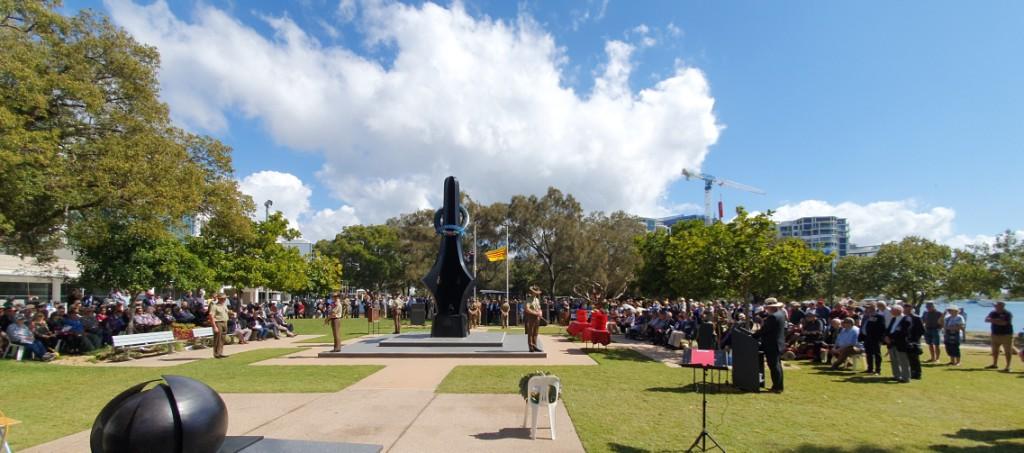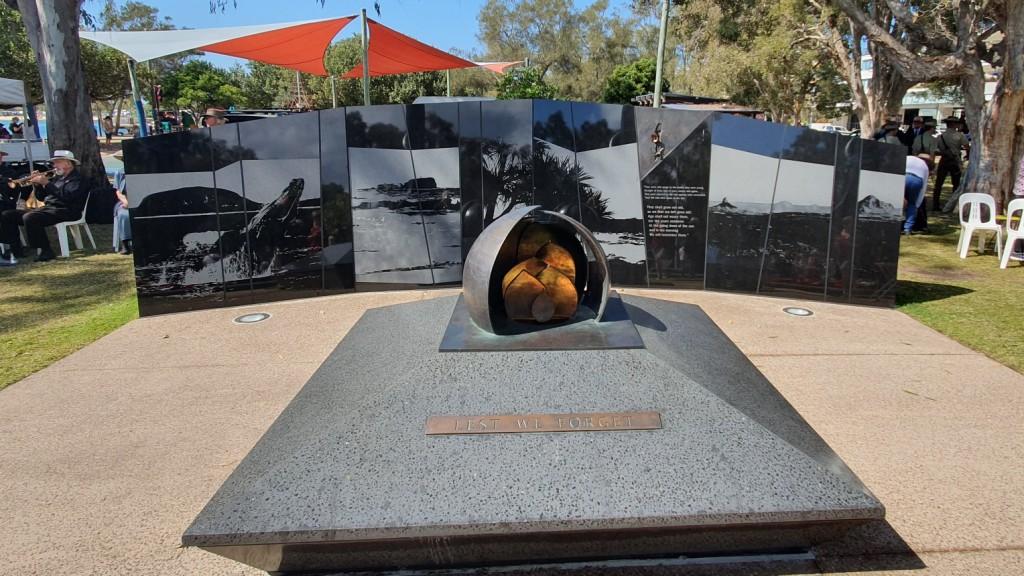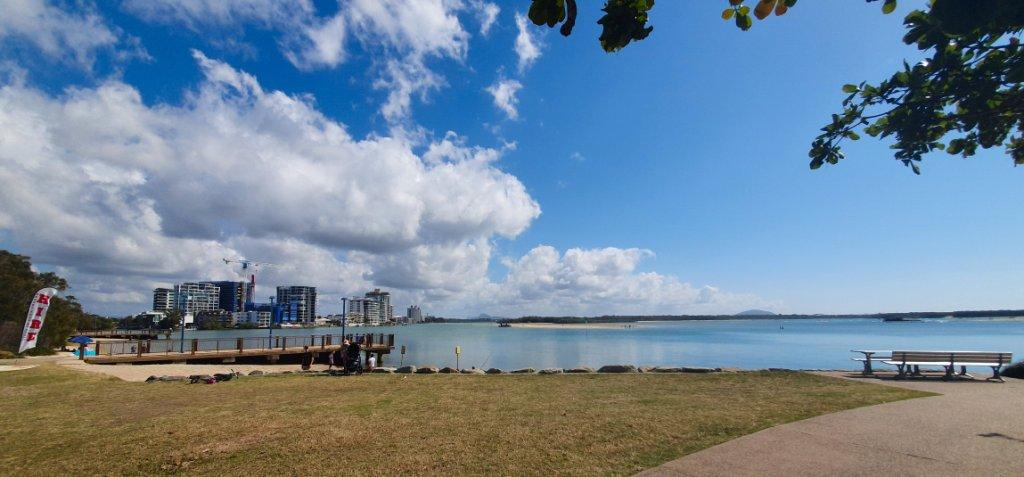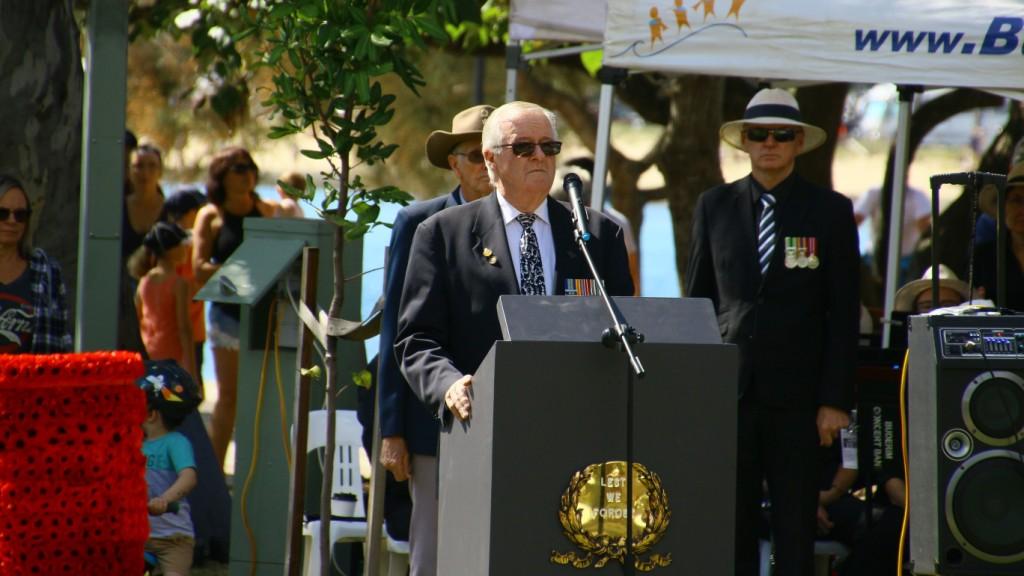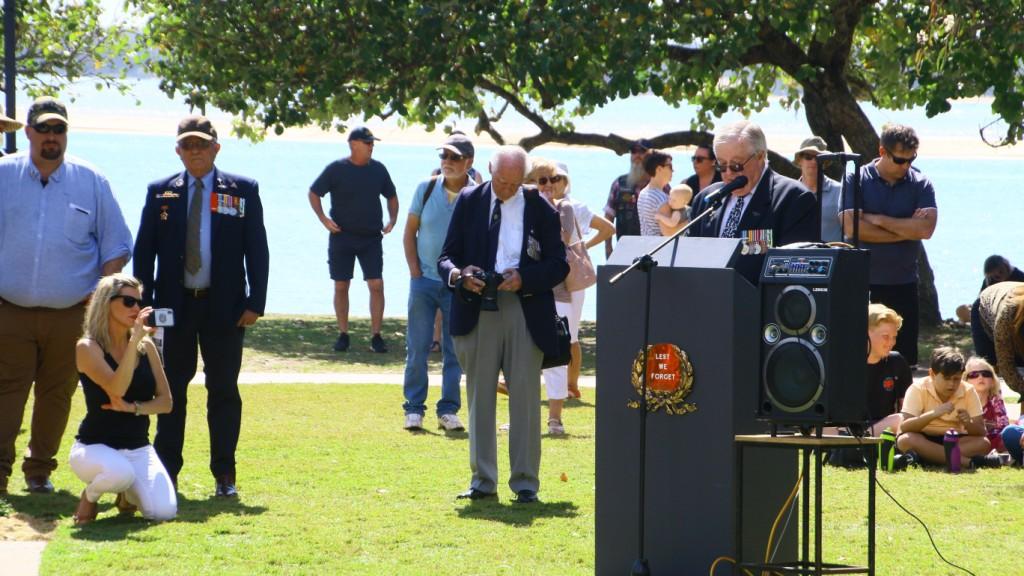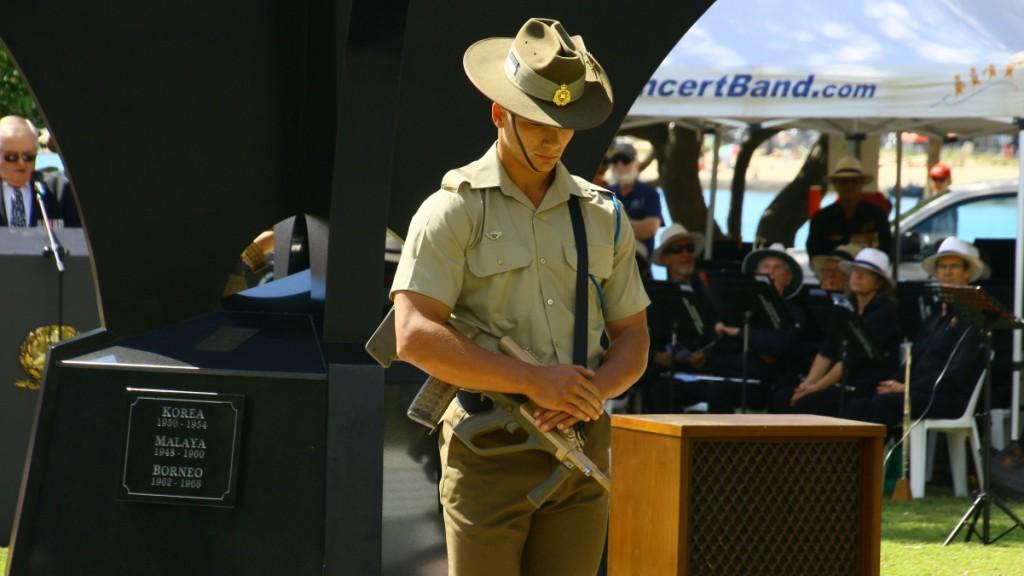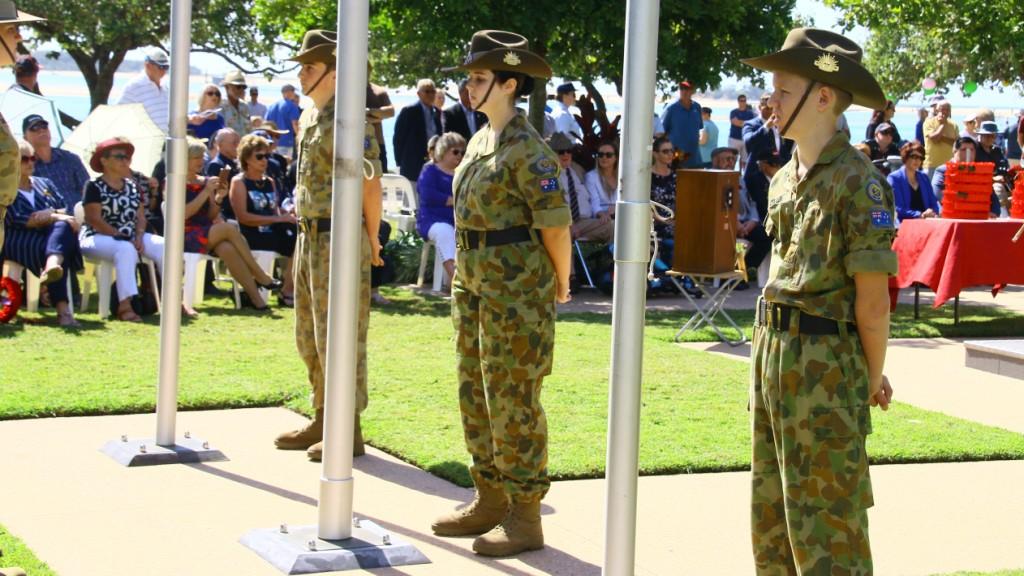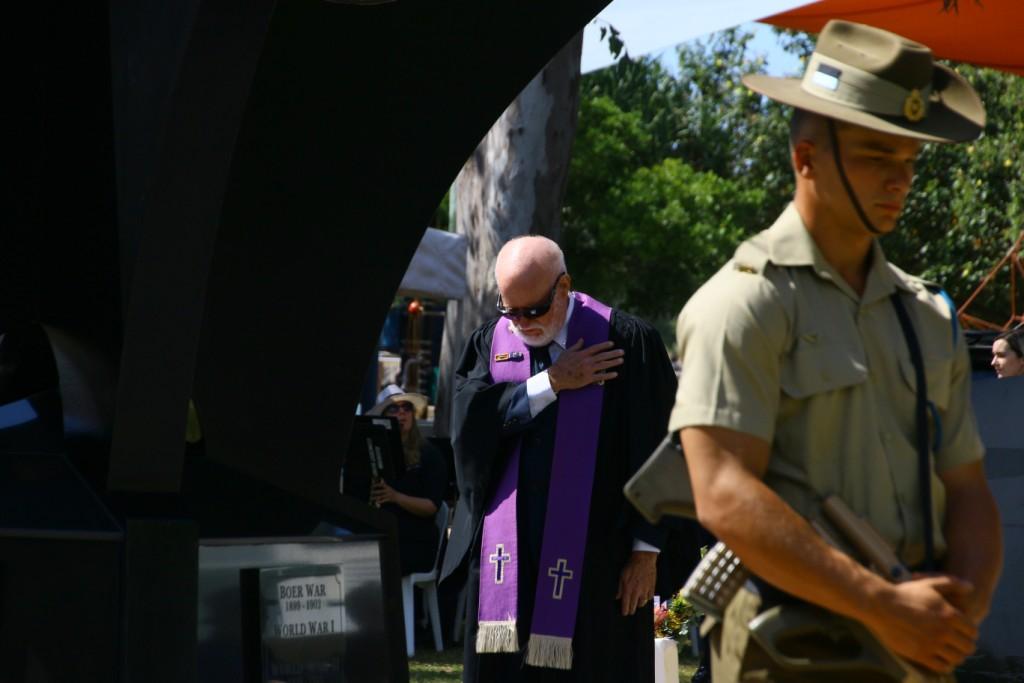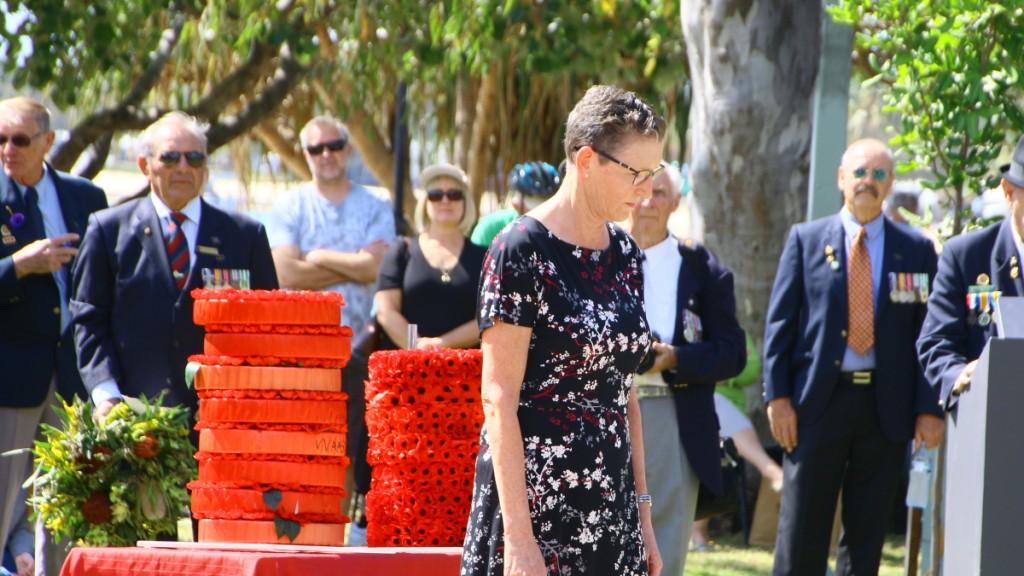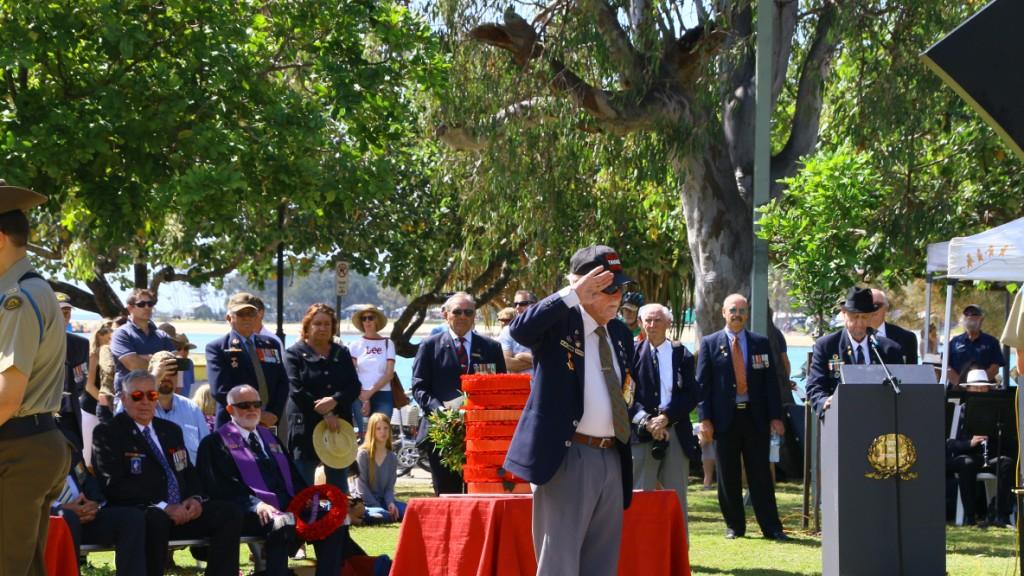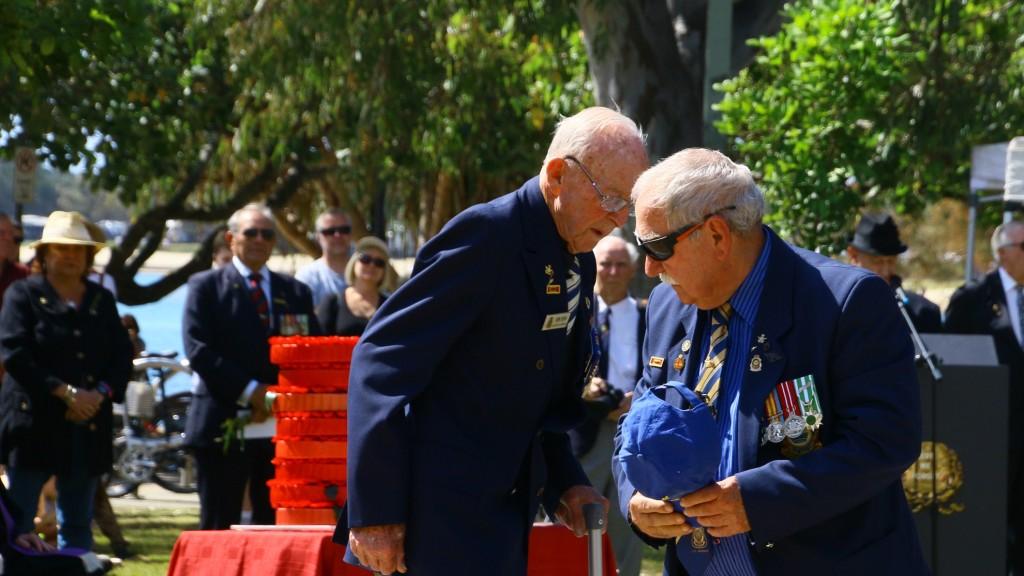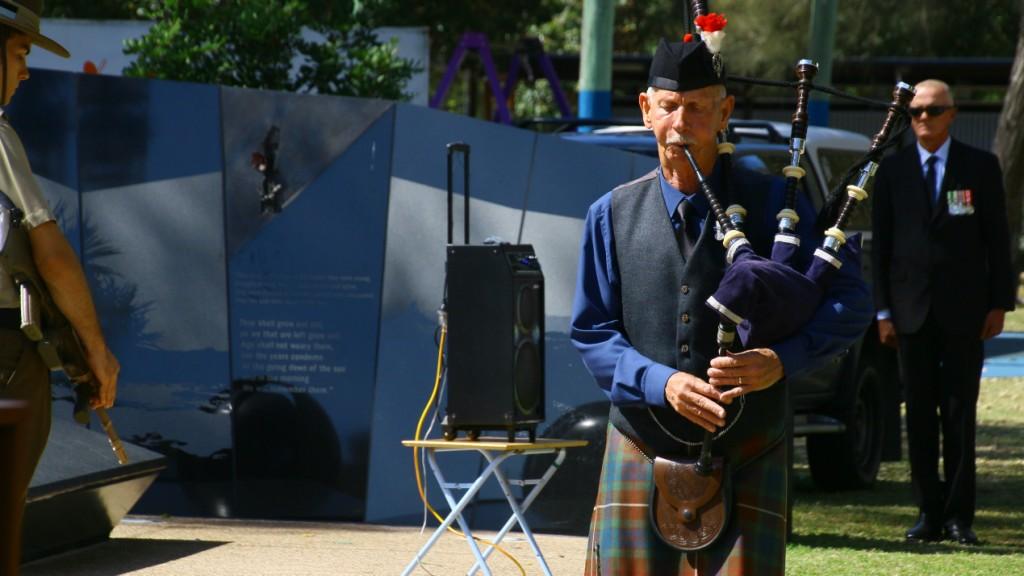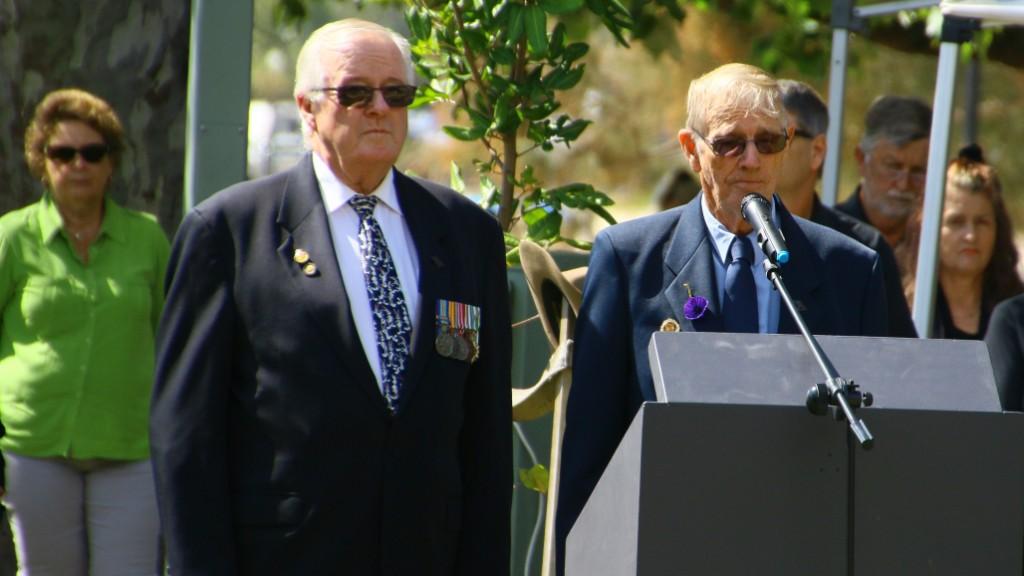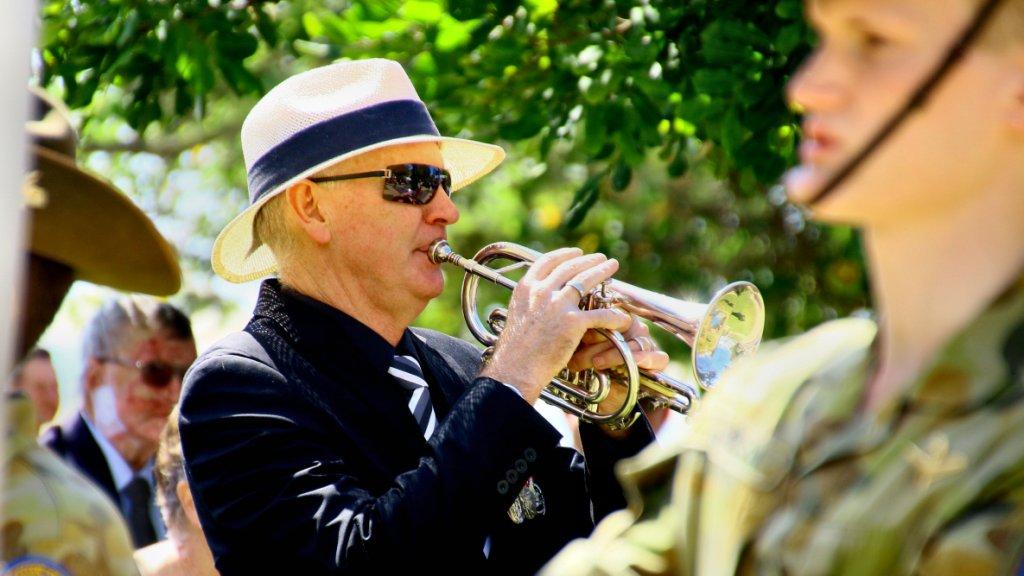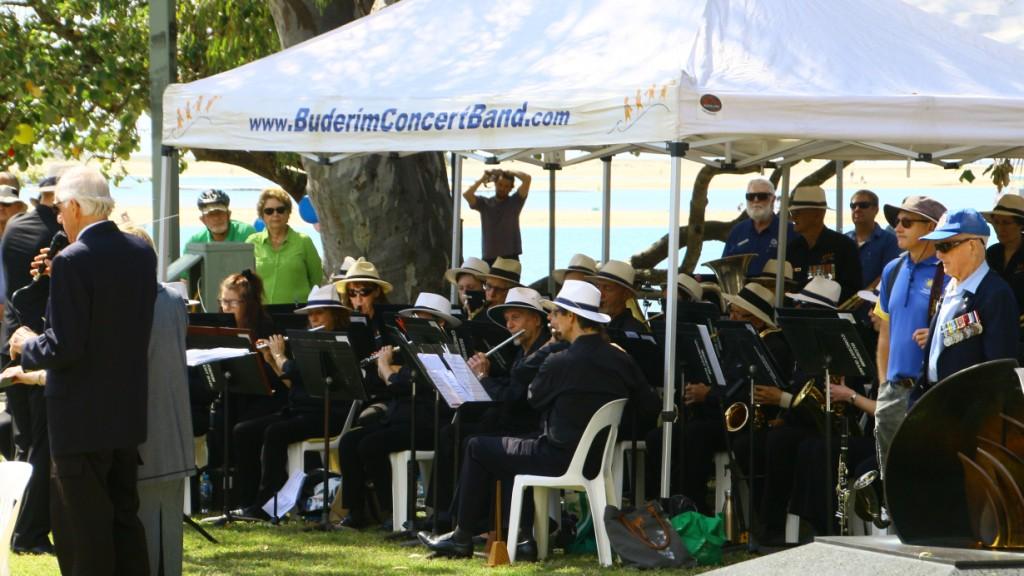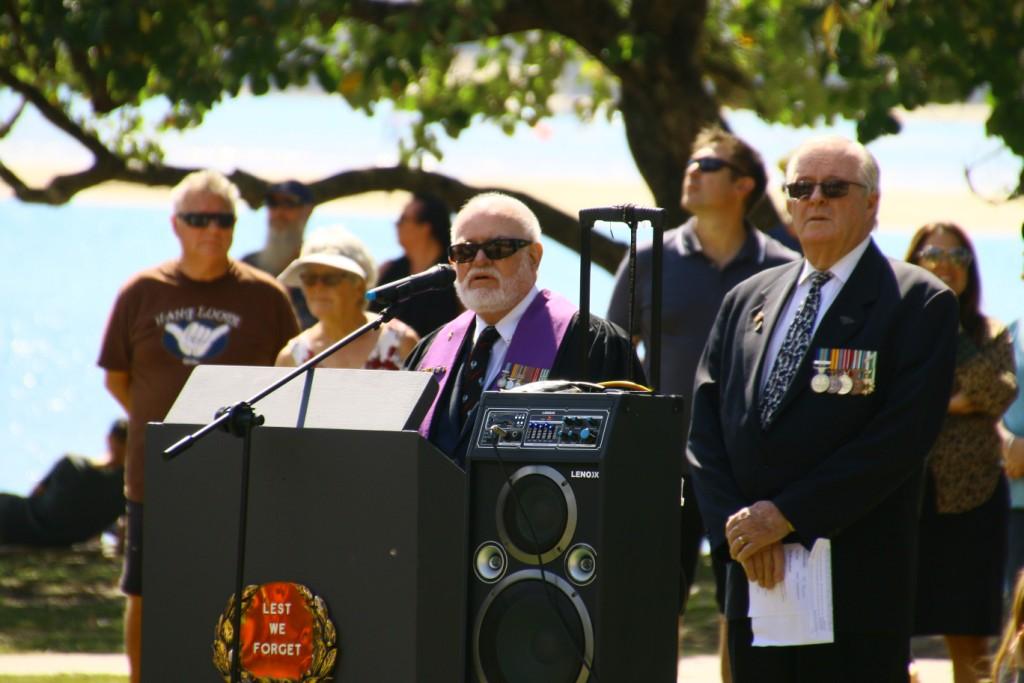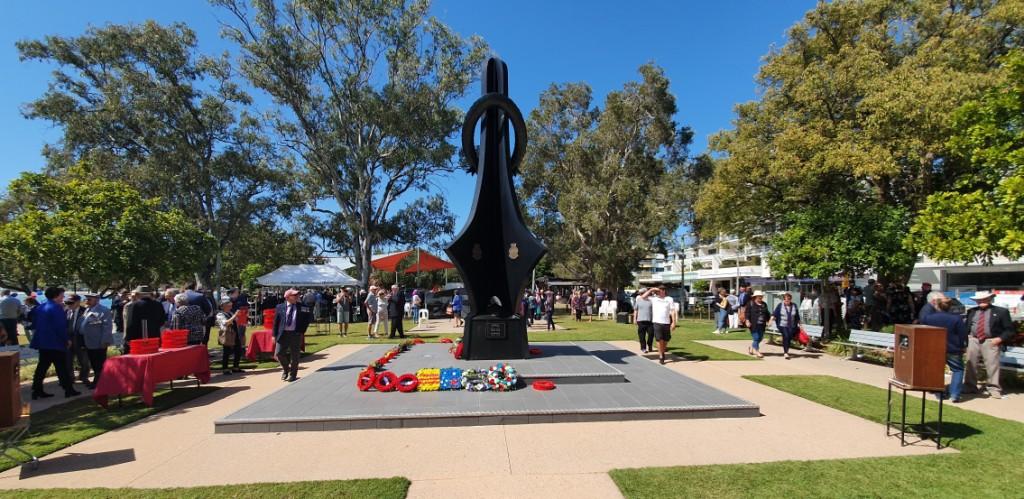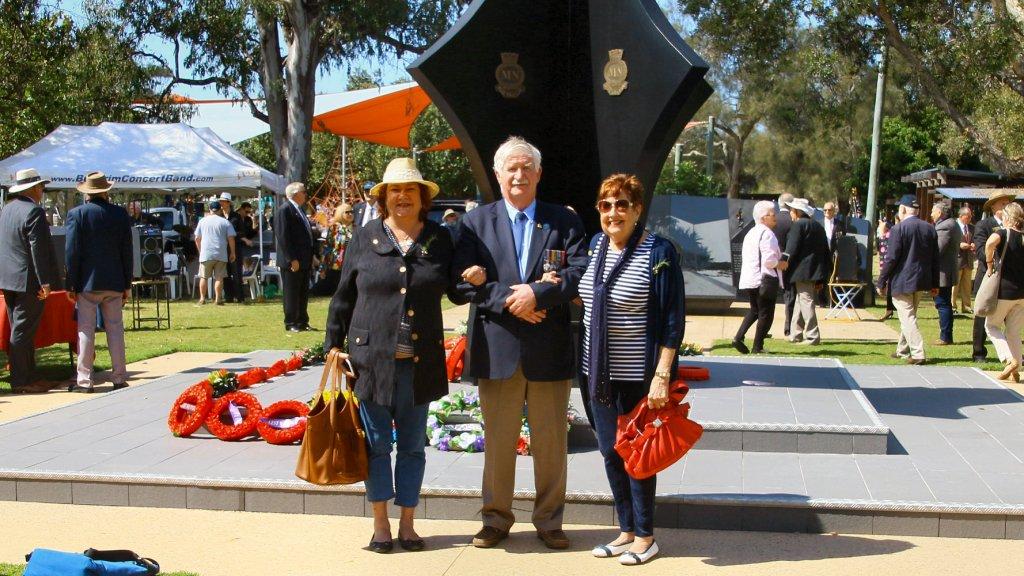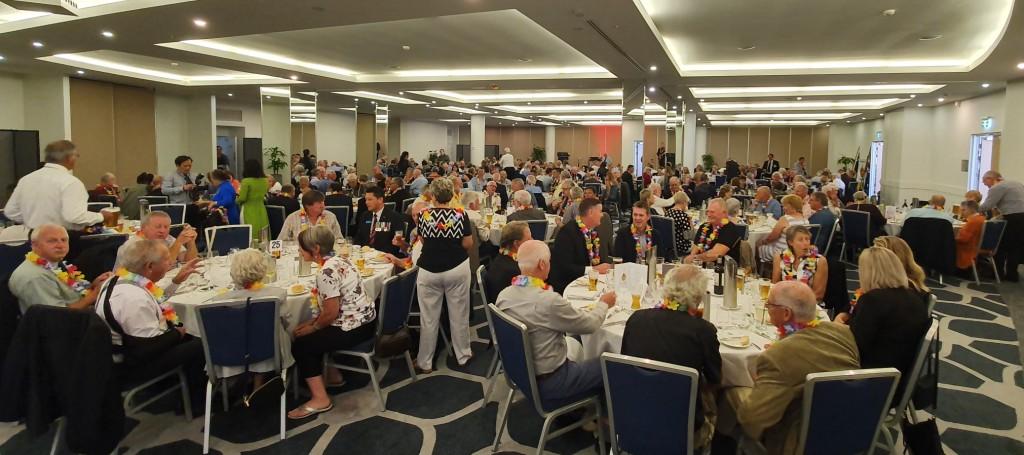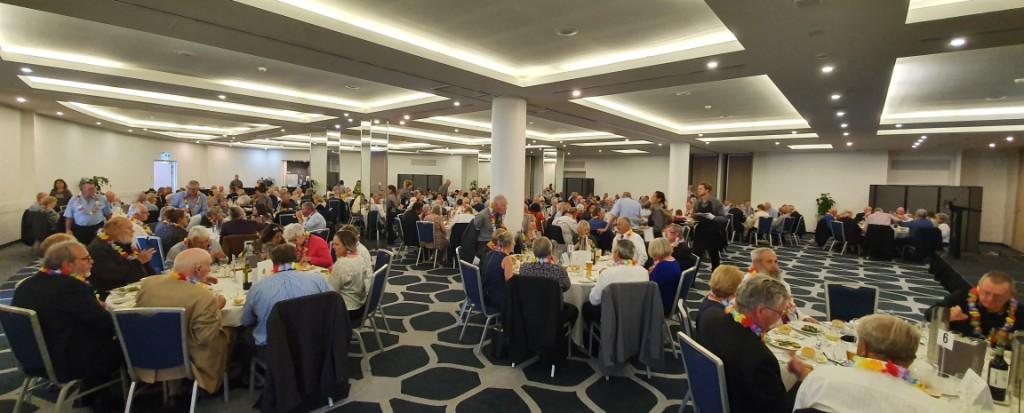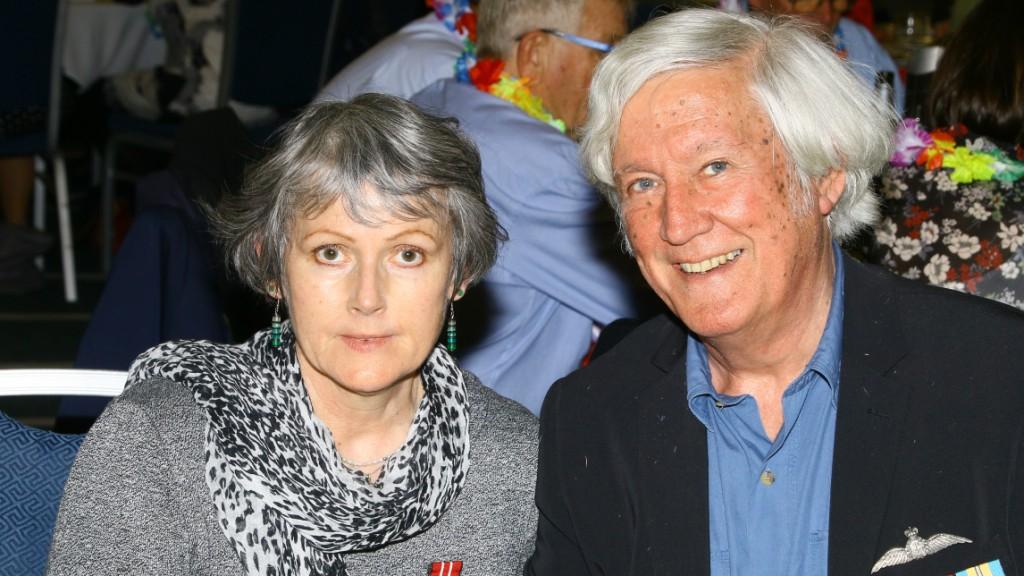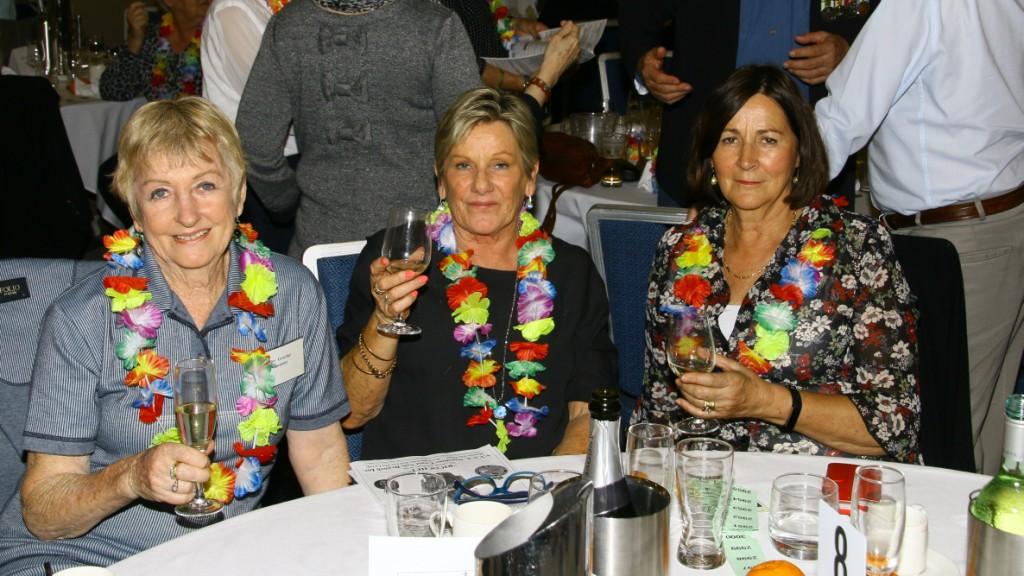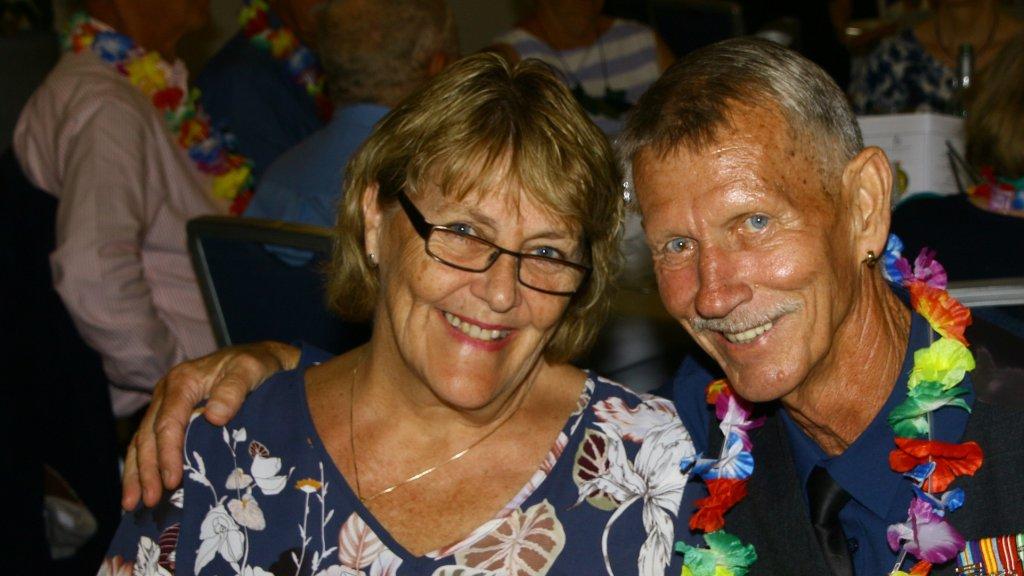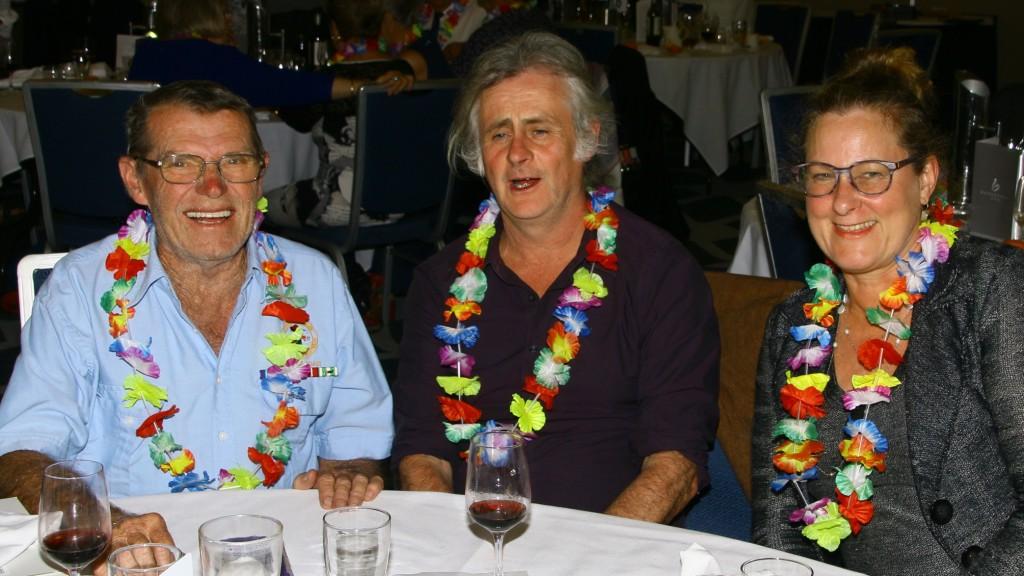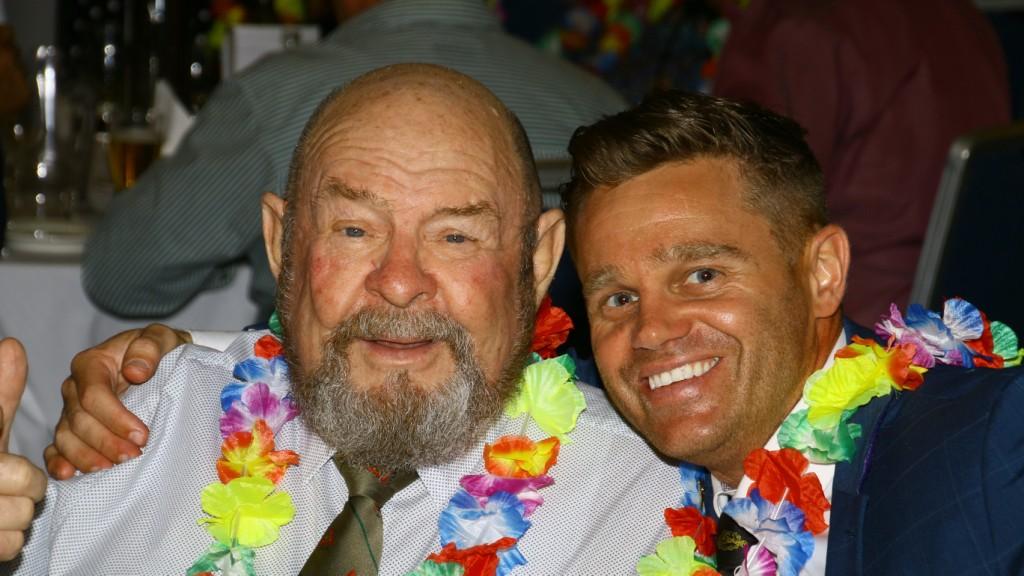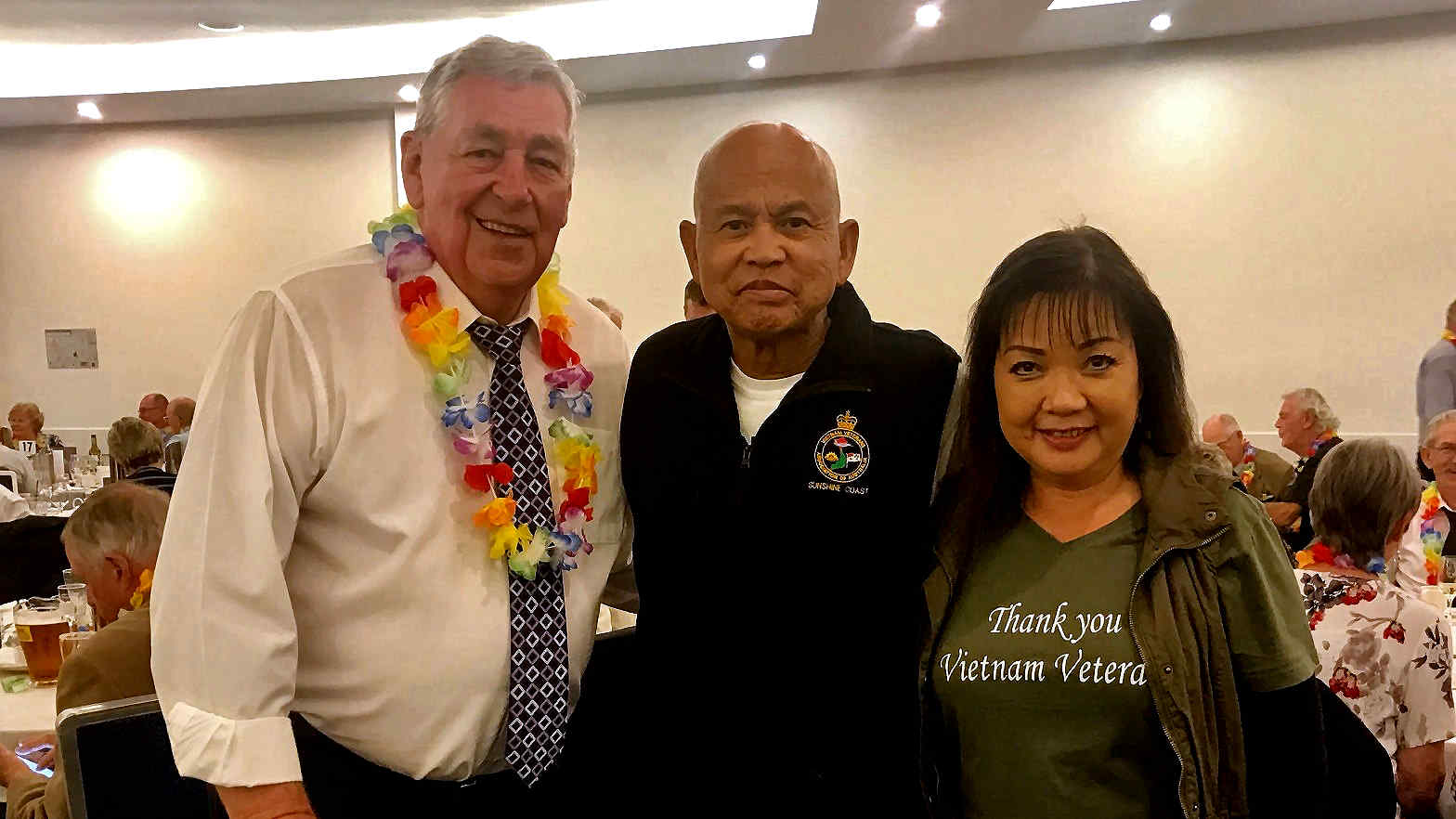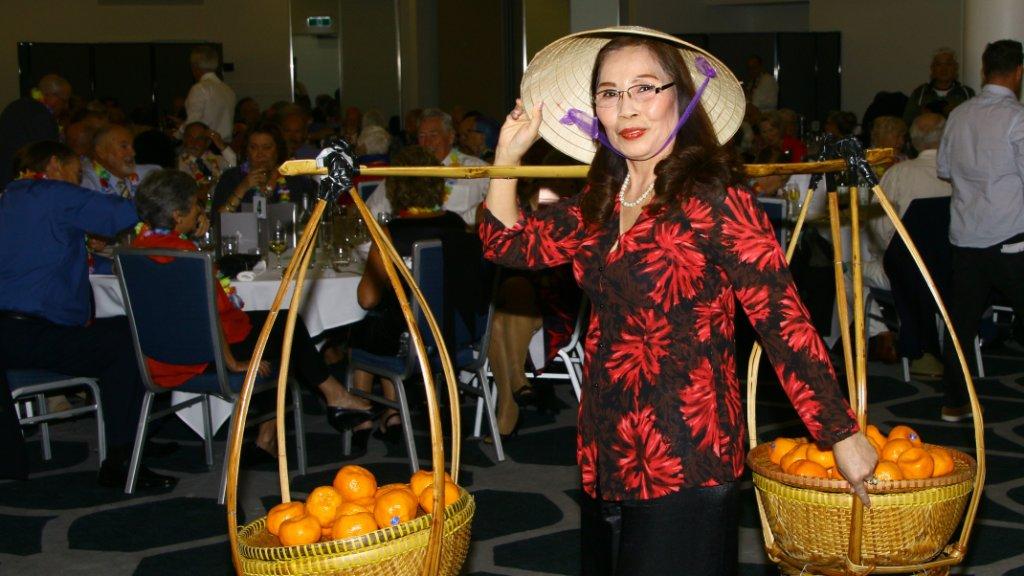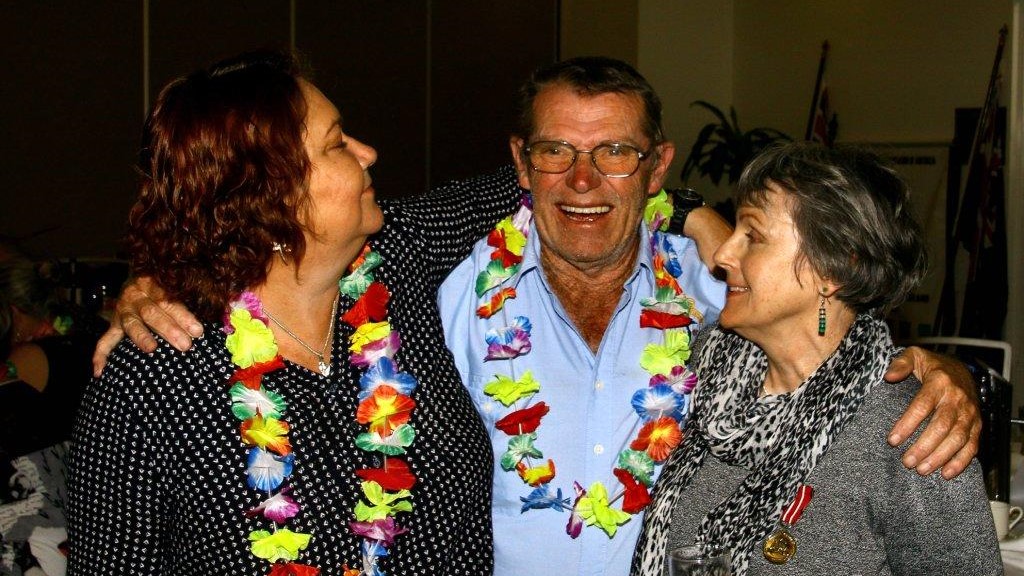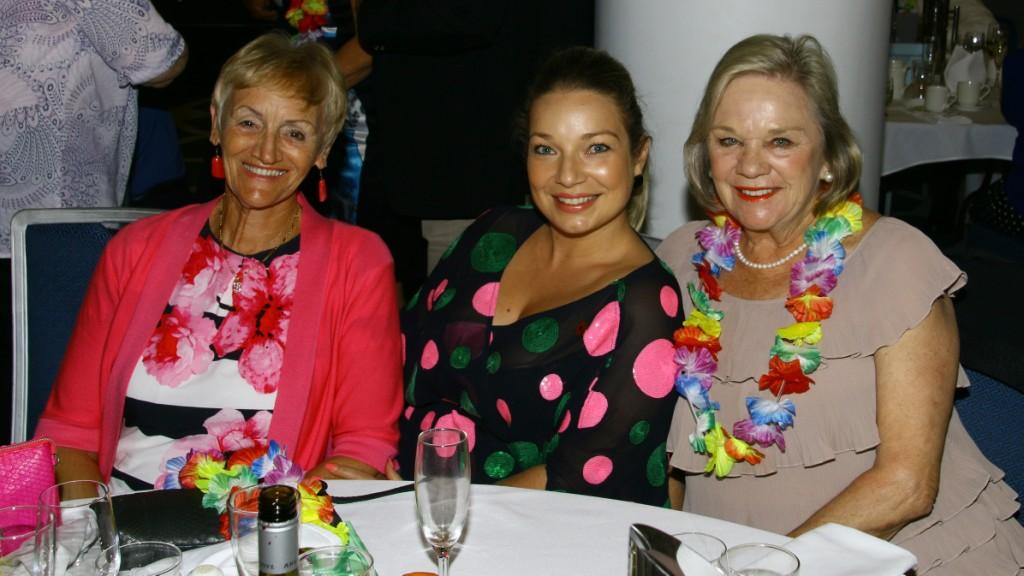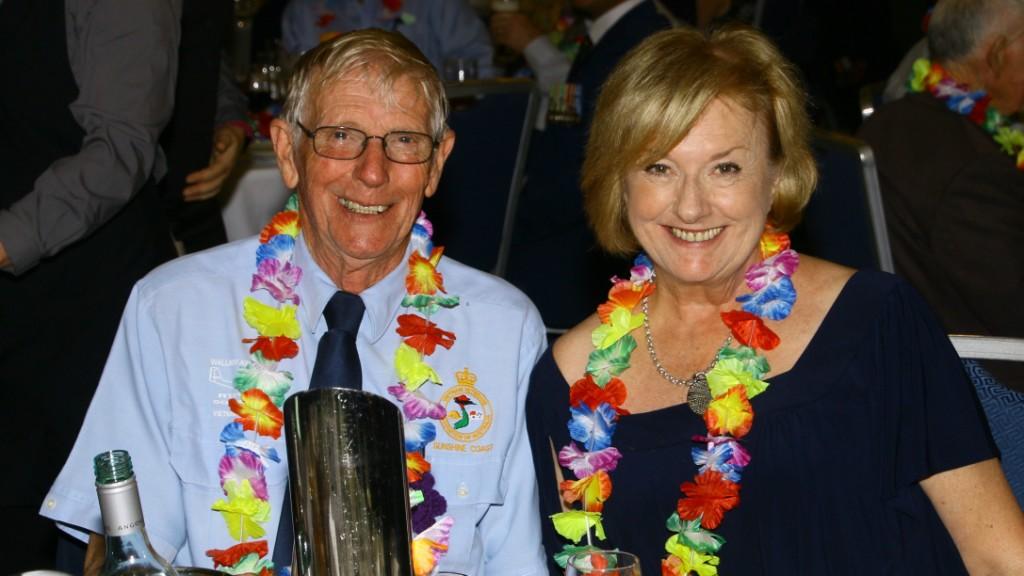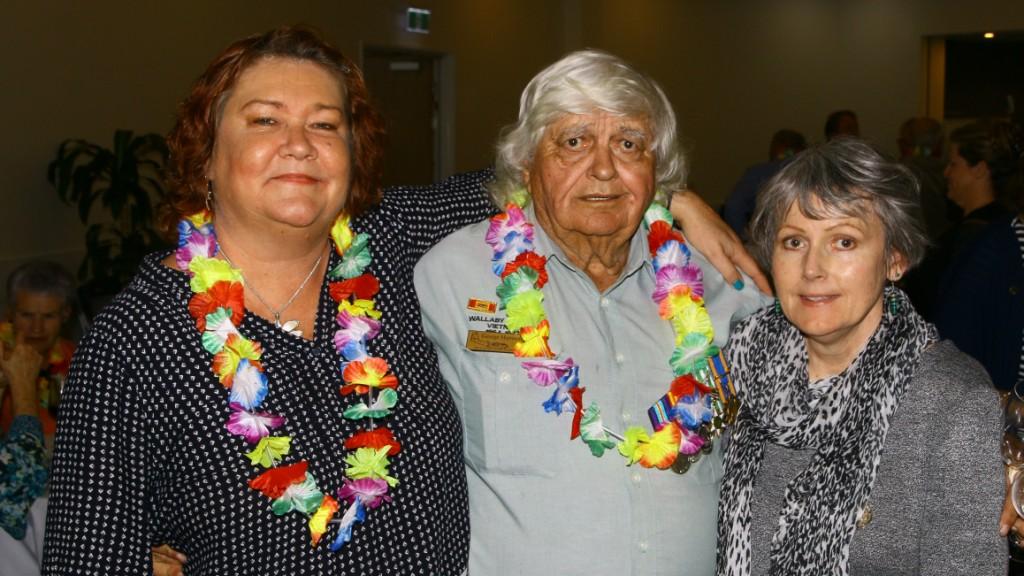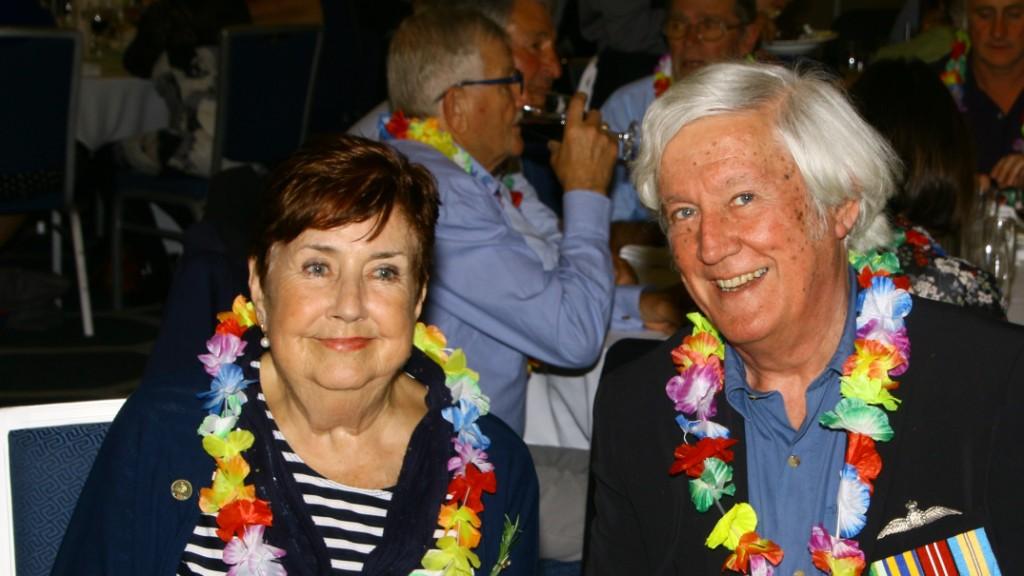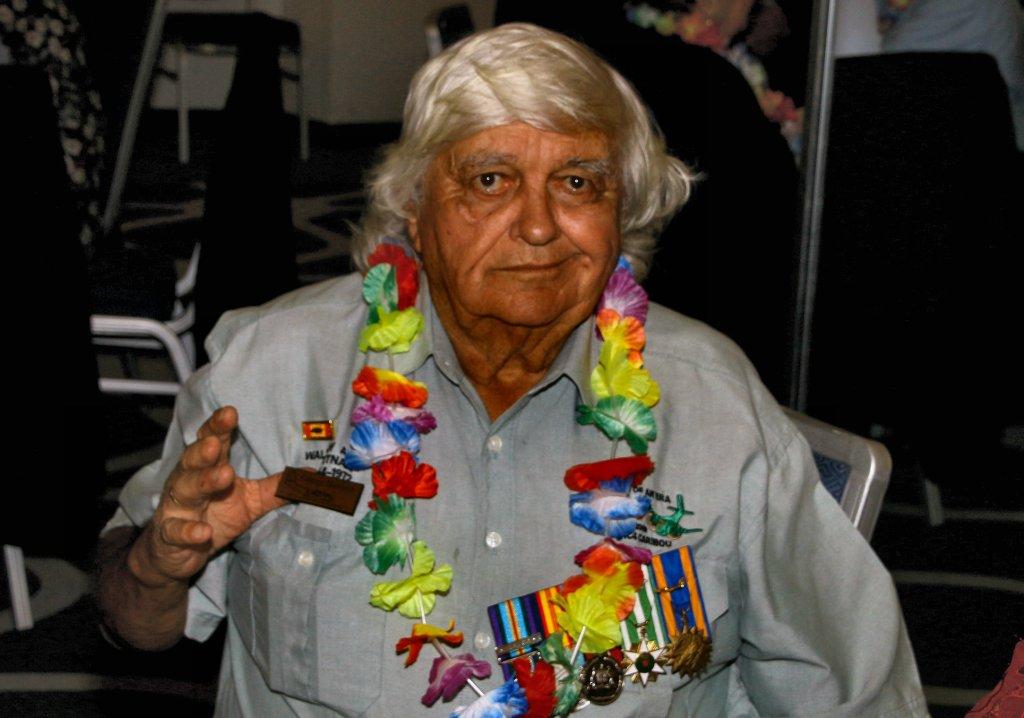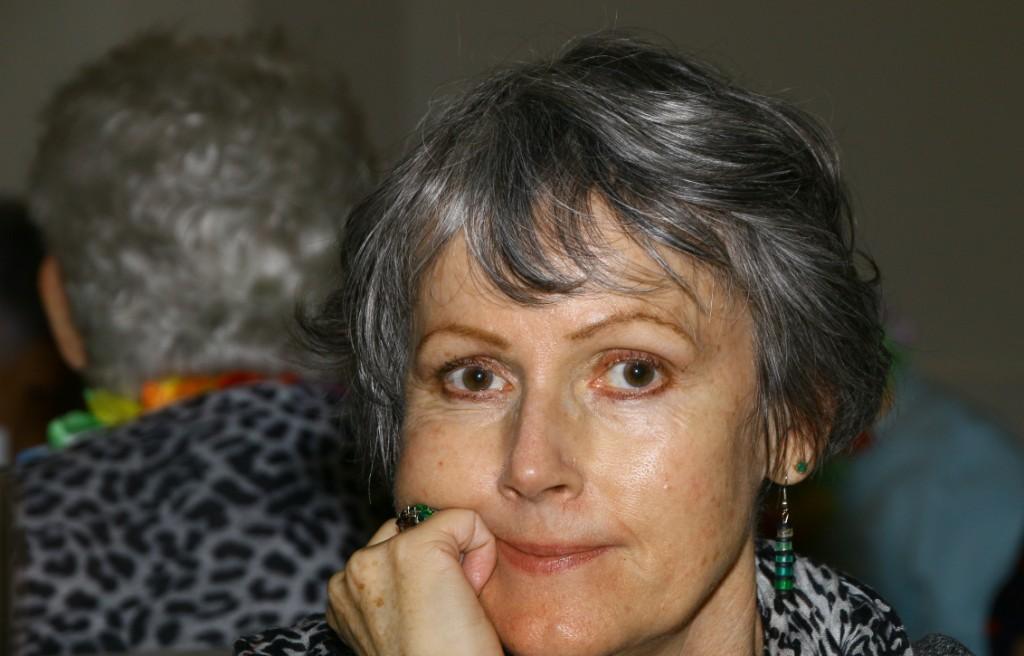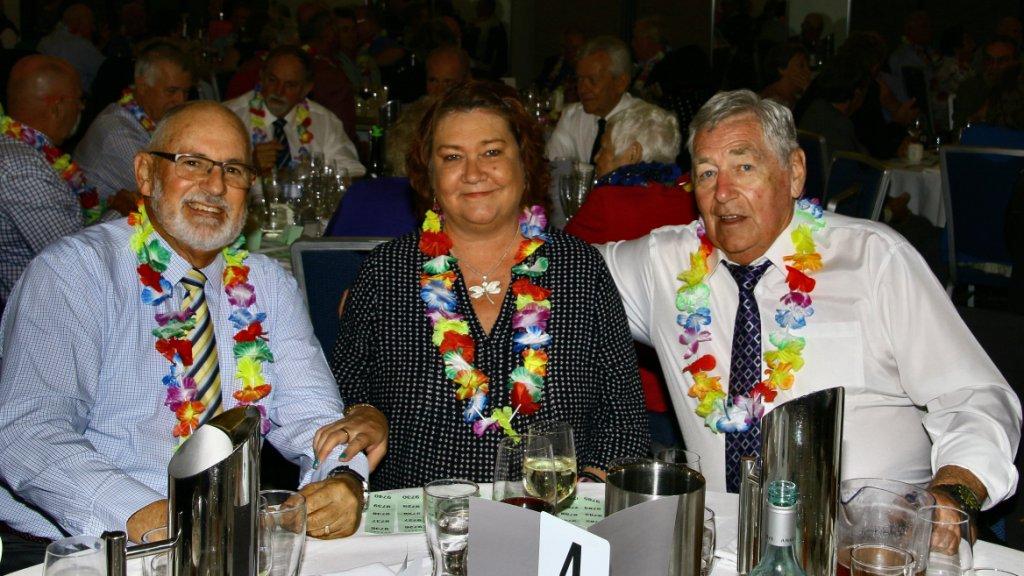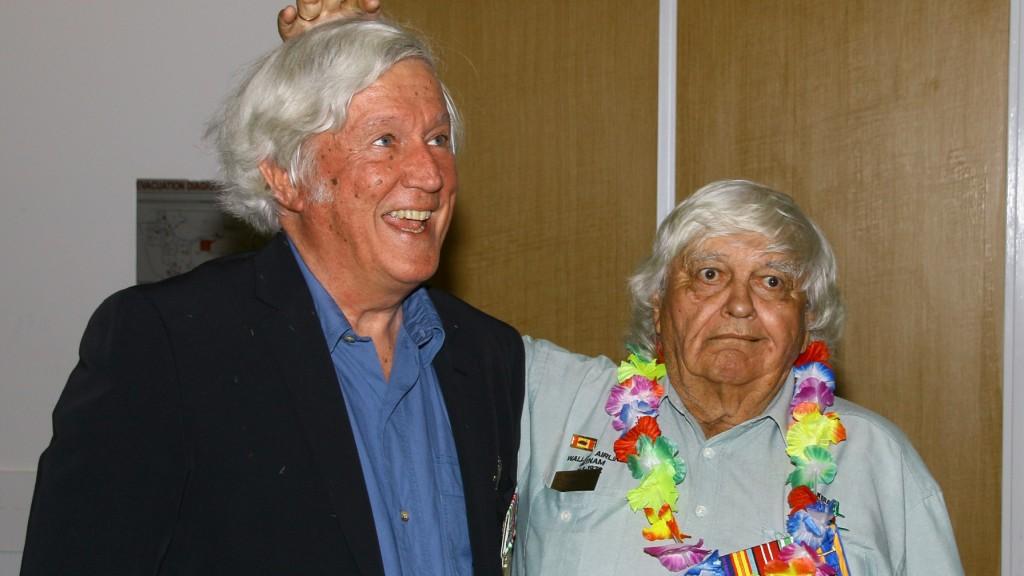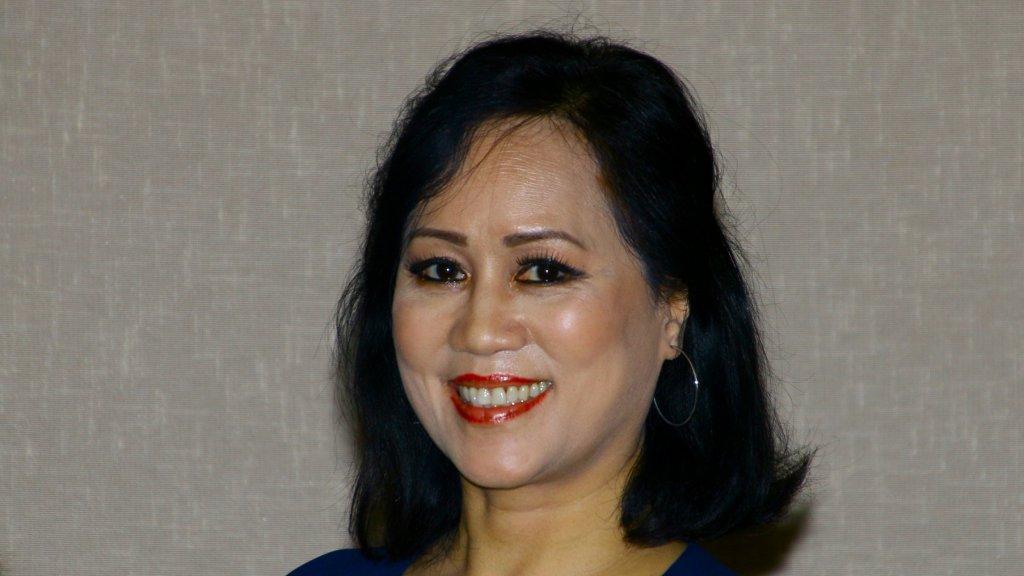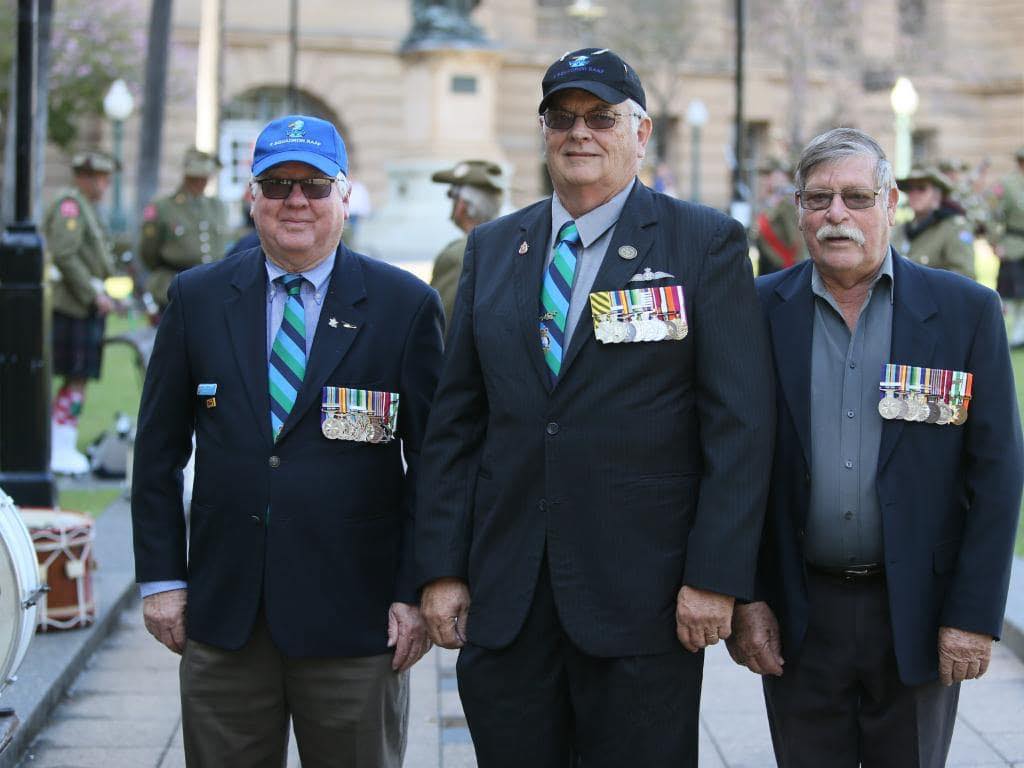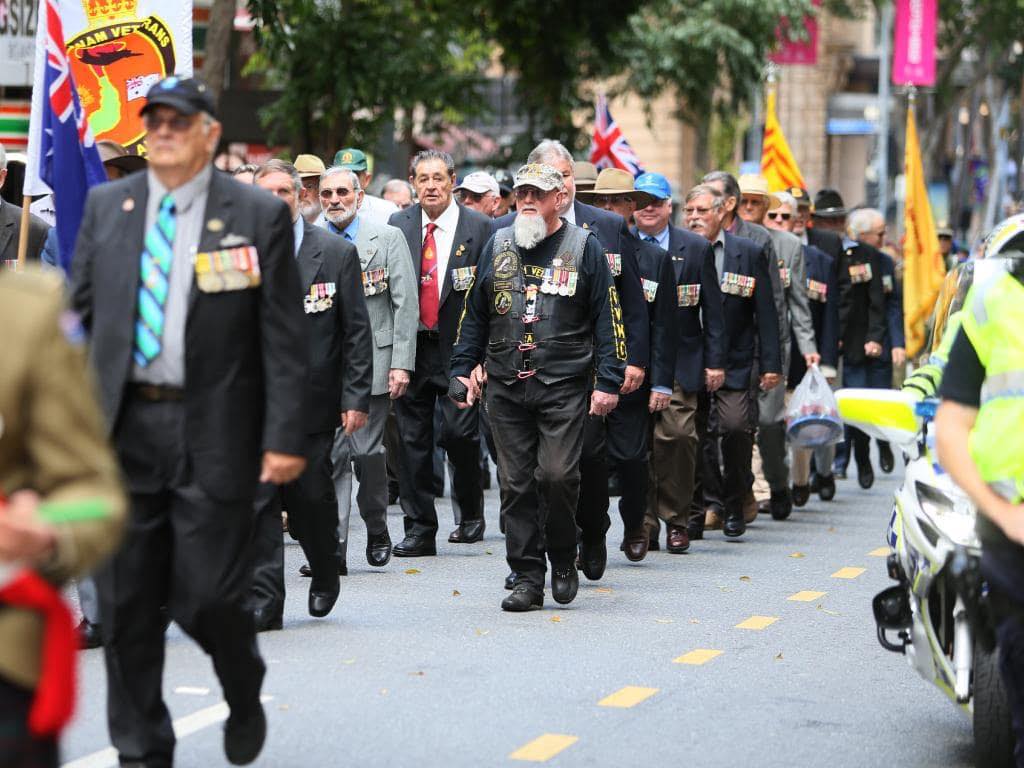|
|
||||
|
||||
|
Privacy Policy | Editorial Policy | Profit Policy | Join the Association | List of Members | Contact us | Index | Links |
||||
|
Back Go to page: 1 2 3 4 5 6 7 8 9 10 11 12 13 14 15 16 17 18 19 20 Forward
|
||||
|
|
||||
|
A lot of the pics below have been crunched to allow the page to open quickly. You can get the HD version by clicking each pic.
|
||||
|
Vietnam Vets Day.
On Sunday the 18th August, 2019, Vietnam Vets Associations throughout Australia held well attended memorial services to commemorate the battle of Long Tan which took place not far from Nui Dat, the Australian Army’s Vietnam Base, back on the 18th August 1966. The Sunshine Coast chapter of the Vietnam Vets Association held their memorial service at the Cotton Tree Cenotaph in Maroochydore on the Sunshine Coast.
About 120 Members gathered in a park about 200 metres east of the Cenotaph and marched off at 11.00am for the service at the Cenotaph. Click the pic below.
|
||||
|
About a dozen lovely ladies from the Vietnam community in Brisbane, as well as several ex-South Vietnamese soldiers, made the hour and a half road trip from Brisbane to march with the Australian Vets.
|
||||
|
|
||||
|
This year marked the 53rd anniversary of the Battle of Long Tan, where 108 brave young men from D Company 6RAR resisted an attack of 1,500-2,500 North Vietnamese and Viet Cong troops. It would become one of the most extraordinary chapters in Australia's military history.
The attack occurred during the early hours of the 17th August 1966, with the VC using mortars and recoilless rifles. The Australians had only recently established the base at Nui Dat, from which they sought to operate and assert control of Phuoc Tuy, the province for which Australia had operational authority. While the attack caused only limited damage, it perturbed the Australian Task Force Commander, Brigadier Oliver Jackson, as he recognised the base’s potential vulnerability to a significant VC attack. In response to the attack, B Company, 6th Battalion, the Royal Australian Regiment (6RAR) was directed to patrol from the base to locate the VC’s firing positions. B Company achieved this task, before being replaced by D Company, 6RAR at midday on the 18th August. D Company followed parallel cart tracks leading away from the firing positions into a rubber plantation towards the abandoned village of Long Tan.
It was in this rubber plantation, approximately 4 kilometres to the east
of Nui Dat, that the battle took place. As D Company moved through the
rubber plantation (with two platoons up and one platoon moving behind),
11 Platoon commanded by Lieutenant Gordon Sharp on the Australian right
ran into a
From the battle’s outset, the skies opened and an intense afternoon storm added to the cacophony of noise and terror in the rubber plantation. Adding to general chaos in the plantation was the rise of ‘mud mist’, which reduced visibility and made it difficult for both sides to visually identify targets. This phenomenon was common during the Vietnam War, when monsoonal rains fell with such force that the churned red earth below splashed up to 50 centimetres off the ground, staining all that it came into contact with. Further complicating the desperate situation was the loss of comms, with the radios for both 10 and 11 platoons damaged by gunfire.
With 10 Platoon unable to reach 11 Platoon, Lieutenant Kendall was ordered to withdraw his platoon and re-join Company Headquarters. At this point, Lieutenant David Sabben was ordered to swing two sections from his 12 Platoon in a southerly attempt to reach 11 Platoon from a different direction. Enroute, Sabben’s group also encountered stiff resistance and could not reach their target.
Thus, D Company was now splintered into separate groups, each harassed by determined VC attacks. 11 Platoon’s predicament was the most dire. Isolated from the remainder of the company for an hour and a half since first contact, more than half the platoon’s strength of 28 men had been wounded within 20 minutes of the first exchange of fire. Back at Nui Dat, the Australian base buzzed as reports from Long Tan kept increasing the estimated number of VC opposing the Australians. Allied artillery was already firing on the VC, with targets identified by Forward Observers embedded with D Company. US air support was requested with the Americans enthusiastically agreeing to help, however, when three F4 Phantom jets responded, they could not identify targets on the ground through the thick cloud and dropped their ordnance beyond the range of the enemy. Two daring RAAF pilots from 9 Squadron had more luck when they flew through atrocious weather to drop boxes of ammunition from treetop height down to D Company whose supply was alarmingly low.
9 Squadron started the day with normal squadron activities; two Iroquois moved from Vung Tau to Nui Dat on standby duties and to transport Australian entertainers, Col Joye and Little Pattie back to Vung Tau following their concert show for the troops.
Later in the afternoon, a relief force was arranged to move to D Company’s aid. First, B Company (which was returning to Nui Dat after their earlier mission) was ordered to turn around and find D Company. Second, permission was granted for the Armoured Personnel Carriers (APC) of 3 APC Troop to move to support D Company. Subsequently ten APC’s left Nui Dat carrying A Company, 6RAR. En route, the APCs had a minor encounter with a group of VC that were attempting to flank the Australians. After a small skirmish, the troops remounted and the APCs sped on towards Long Tan.
Just before 6.00 pm, the surviving 13 members of 11 Platoon were finally able to pull back from their position and make their way to 12 Platoon guided by a smoke grenade. Half an hour later, taking advantage of a temporary lull in the fighting, the combined 11 and 12 Platoon were able to regroup with the rest of the company, consolidating the strength of D Company for the first time in the battle.
The following half an hour saw relentless wave attacks on D Company. Fortunately for the Australians, the ground they occupied fell away slightly at their rear, which afforded some protection from the rifle and machine gun fire which mostly passed safely over their heads. The VC attacks were determined, with their courage proven by their willingness to continue the attack even as large numbers of their own troops fell. As darkness fell over the rubber plantation at 7pm, D Company’s relief appeared with the simultaneous arrival of B Company and the APCs, their .50 calibre heavy machine guns blasting through the rubber, breaking up the attacking ranks of VC and sending them scattered into the darkness. The Battle of Long Tan was over.
With the battle’s conclusion and despite the desire of some D Company members to immediately return to 11 Platoon’s location, Lieutenant Colonel Colin Townsend, the (Commanding Officer of 6RAR who arrived with the APCs), made the decision to pull the Australians back to the western edge of the rubber plantation, where priority of effort was devoted to the evacuation of wounded. The Australians were despondent, believing they had suffered a terrible defeat, however, over the following days, the outcome of the battle crystallised. In short, an Australian infantry company of 108 men had survived an unexpected encounter with two VC formations – later identified as 275 VC Main Force Regiment and D445 Battalion – from which as many as 1,000 probably came into contact with the Australians.
It is essential to note that despite the ten-to-one numerical superiority enjoyed by the VC, the Australians had a considerable advantage of their own – the fire support of three batteries of 1 Field Regiment sited at Nui Dat, complemented by a battery of American medium artillery from 2/35th Artillery Battalion. The Allied soldiers manning these guns worked tirelessly during the battle, firing almost 3,500 rounds. Townsend estimated that at least 50 percent of the VC dead were killed by artillery fire; however, ascertaining an accurate figure was almost impossible because the volume of shellfire devastated the battleground, making it impossible to determine the cause of death for many of the bodies. The arrival of B Company 6RAR and 3 APC Troop brought an armoured advantage not available to the VC. Combined with artillery support and aerial resupply, this superiority in mobility and firepower offset some of the numerical disadvantage that D Company faced.
Praise for D Company came from many quarters. Prime Minister Harold Holt congratulated the ‘skill, effectiveness and high courage' of the combatants, which he noted was in the best Australian tradition. American General William Westmoreland congratulated the Australians, declaring they had won one of the most spectacular victories in Vietnam to date. For their part, the VC also claimed Long Tan as a victory and disputed Australian accounts of the battle. VC leaders who participated in the battle were reluctant to acknowledge the severe losses that befell their force. A crucial reason for this was the importance of propaganda in sustaining an insurgency. Some of the more remarkable claims made by the VC in the aftermath of the battle were exaggerations that more than 500 Australian troops had been wiped out and that a US Jet and three Australian APCs had been destroyed. Australia’s actual casualties were 18 killed and 24 wounded. Although that number exceeded any other single day loss in the Vietnam War, the number could have been much higher given the disparity in troop numbers between the two sides.
On the third anniversary of Long Tan, 18th August 1969, a cross was raised on the site of the battle by the men of 6RAR. Veterans from the battle gathered at the cross to commemorate the fallen and the day was commemorated by them as Long Tan Day from then on. Over time, all Vietnam veterans adopted the day as one to commemorate those who served and died in Vietnam. In 1987, following the very successful Welcome Home parade for Vietnam veterans in Sydney, Prime Minister Bob Hawke announced that Long Tan Day would be known as Vietnam Veterans Day. Since then, it has been commemorated every year as the day on which the service of all those men and women who served in Vietnam is remembered.
Long Tan is now remembered as an exemplar of Australian soldiers channelling the same attributes of bravery, teamwork and endurance that their forebears displayed in earlier conflicts.
The Vets were joined by quite a number of people from the Maroochydore community who attended the ceremony to thank those that spent their youthful years doing their duty in Vietnam. |
||||
|
MC for day’s event was Michael Sheahan, the advertising/marketing manager for the Sunshine Coast Vietnam Vets Association. Michael served with Army’s 17th Construction Squadron in Vietnam from Feb 1969 to Feb 1970.
|
||||
|
The Catafalque Party and the Flag party were marched on.
|
||||
|
These young people stood at attention/at ease in the heat, in full uniform, for about an hour and did a magnificent job.
|
||||
|
Padre for the day was Arthur Fry. Arthur served in Vietnam from Jan 1967 to Jan 1968 at Phan Rang, then was sent back again for a second tour in Feb 1971 to Jul 1971, this time at Vung Tau.
|
||||
|
Laying of wreaths in recognition of those fallen.
|
||||
|
Wendy Latham, on behalf of the DVA.
|
||||
|
Harry Smith, on behalf of his colleagues who served with him all those years ago.
|
||||
|
Bill Bunter, on behalf of 9 Squadron.
9 Squadron also paid a critical part in the battle of Long Tan. In the afternoon at about 1540, as D Company troops were conducting a search operation in the rubber plantation at Long Tan, they ran into an ambush by Viet Cong battalions. During the fierce battle that raged, Australian troops were running low on ammunition and were threatened with being overrun by the Viet Cong if they could not be re-supplied. Only helicopters could get the ammunition to the troops in time.
The two Iroquois on standby at Nui Dat were tasked to supply the ammunition to the troops. Flying conditions could not have been worse; the heavy rain reduced visibility and forced the crews to fly at tree-top height; navigation was extremely difficult. Following a smoke signal from the Australian troops, the supply helicopter, flown by Flt Lt Cliff Dohle and Flt Lt Bruce Lane, hovered at 10 metres, just above the tree tops and dropped the critical ammunition to the waiting troops. They were spot on and a relieved voice was heard over the radio, "You bloody beaut, that was smack on". The second helicopter crew, Flt Lt Frank Riley and Flt Lt Bob Grandin, was tasked to establish radio contact and locate the troops for the ammunition drop and to provide backup and support.
At about 2300 that night, seven Iroquois helicopters evacuated the wounded and recovered the dead from the battle area. The helicopters landed, in turn, on a landing zone about the size of a tennis court with the only lighting being provided by four torches, vertically positioned in the corners of the landing area. The re-supply sorties that day and the continued operations at night, showed the skill and dedication of the pilots and crewmen of 9 Squadron. There was no moon, crews flew at tree top height, in line astern with the small red tail light of the helicopter ahead as their only visual reference. It was definitely not an average day in 9 Squadron's history.
|
||||
|
After the wreath laying ceremony, Bruce Fraser slow marched around the Cenotaph, playing the Lament on his pipes, as he does so well.
|
||||
|
Mal Sayers, the Secretary of the Sunshine Coast Vietnam Vets Association, then spoke the Ode to the Fallen after which the Last Post was played, followed by one minute’s silence, then the Rouse.
|
||||
|
The Last Post.
|
||||
|
Aart Schouten and Bev Gourley sang both the Australian and New Zealand National Anthems, accompanied by the Buderim Concert Band. The Band is a group of amateur, semi-professional and retired professional musicians coming from all walks of life including doctors, sales representatives, information industry personnel, school and university students, builders, engineers, teachers, and retirees. Their ages range from 14 to 84 and everything in between.
|
||||
|
The Catafalque Party and the flag party were then marched off, Arthur Fry asked everyone to join him in Benediction then Michael Sheahan, the MC, gave his final address then declared the ceremony closed. The Vets were invited to attend the Maroochydore RSL for lunch.
|
||||
|
Prior to leaving the Memorial and the short walk to the Club for lunch, people mingled and chatted and in some instances, rekinkled old friendships.
|
||||
|
Bree McEvoy, Trev Benneworth, Maggie Anderson - A thorn between two roses?
|
||||
|
Thai Dang, who along with his lovely wife Diamond organises the Vietnamese Community at events such as this, and who drove up from the Gold Coast to be a part of the ceremony, met and had a long chat with John Wilson.
|
||||
|
So when is this “Old enough to know better” supposed to kick in?
|
||||
|
People filed into the Maroochydore RSL, with 10 to a table, and settled in for a great afternoon.
|
||||
|
Some of those at the lunch were:
|
||||
|
Crissie and Steve Wessels. Crissie is on the Vietnam Vets Association committee.
|
||||
|
The fact that there’s a highway to Hell and only a Stairway to Heaven says a lot about the anticipated traffic numbers.
|
||||
|
Bev Gourley, Pam Weston, Rose Luttrell.
|
||||
|
Heather and Bruce Fraser.
|
||||
|
"It's been so long since I've had sex, I've forgotten who ties up whom.
|
||||
|
“Johnno”, Nicky Carey, Meg Carey.
|
||||
|
Laurie Drinkwater, who is the patron of the Association, was expecting his 80th birthday in two day’s time. Laurie served in Vietnam from June 1966 to June 1967 and was a Section Commander of 12 Platoon during the battle of Long Tan.
|
||||
|
Michael Howe, Thai Dang, Diamond Dang.
Once again, the very generous Thai and Diamond Dang, along with the gorgeous Vietnamese girls (the sexy grand-mothers as Thai calls them) provided entertainment all afternoon. The girls performed a traditional hat-dance which was choreographed by Diamond.
Click the pic below to see it.
|
||||
|
|
||||
|
|
||||
|
One of the lovely “Grand-mothers” Kim Dung, loaded up two baskets with mandarins and handed them out to the troops.
|
||||
|
Bree McEvoy, “Johnno”, Crissie Wessels.
|
||||
|
Leonie Hickey, Tara King, Denise Huxham.
|
||||
|
Mal Sayers, Joan Blinco.
|
||||
|
Bree McEvoy, George Harrison, Crissie Wessels. George was posted to RTFV-35 Sqn (RAAF) in Vung Tau from Jan 1965 to Jul 1965.
|
||||
|
Maggie Anderson, Steve Wessels.
|
||||
|
Men don't look for advice in men's magazines because men think, “'I know what I'm doing, just show me somebody naked”.
|
||||
|
||||
|
|
||||
|
Michael Liddelow, Bree McEvoy, Michael Howe.
|
||||
|
According to a new survey, women say they feel more comfortable undressing in front of men than they do undressing in front of other women. They say that women are too judgmental, where, of course, men are just grateful
|
||||
|
Steve Wessels, George Harrison.
|
||||
|
Thien Khuong, another of the beautiful grand-mothers.
|
||||
|
Bigamy is having one wife too many. Monogamy is the same. |
||||
|
|
||||
|
Brisbane
|
||||
|
|
||||
|
Brisbane also hosted a Vietnam Vets ceremony. John Lunn (above left) sent us these two pics.
|
||||
|
|
||||
|
|
||||
|
Don’t confuse my personality with my attitude. My personality is who I am. My attitude depends on why you are.
|
||||
|
|
||||
|
|
||||
|
|

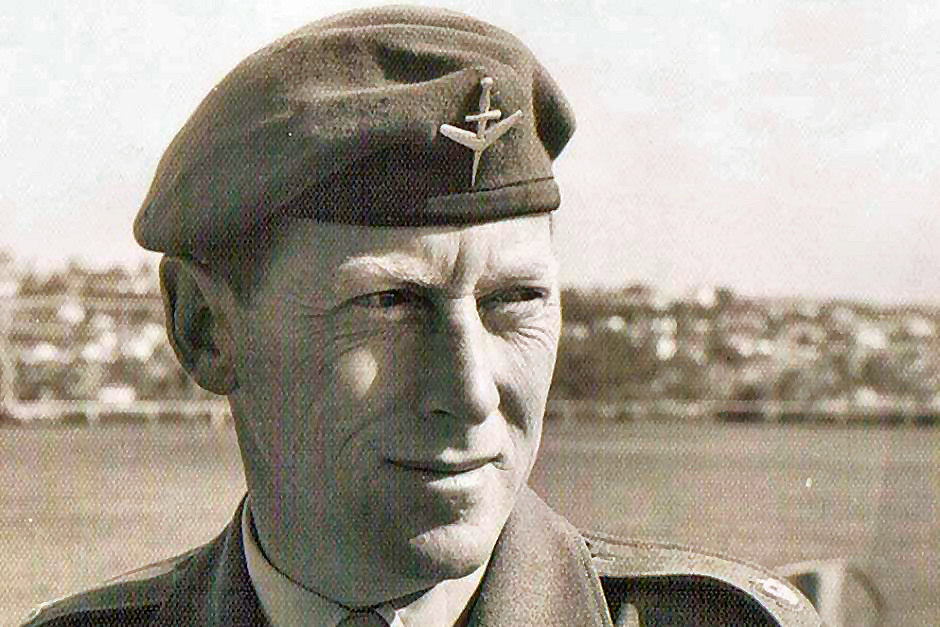 small group of VC. After a short exchange, the enemy fled eastwards with
11 Platoon in pursuit. Little did the Australians know that they were
about to collide with a major concentration of enemy forces. Just after
4.00 pm during the chase, 11 Platoon was forced to the ground after
coming under heavy fire. Lieutenant Geoff Kendall leading 10 Platoon (in
the front left position) was ordered to move to 11 Platoon’s assistance;
however, his platoon was also stopped by equally intense fire before it
could provide that help. Behind D Company’s two forward platoons, the
company commander, Major Harry Smith, with 12 Platoon and Company
Headquarters, sent reports to Nui Dat requesting support for his
beleaguered company.
small group of VC. After a short exchange, the enemy fled eastwards with
11 Platoon in pursuit. Little did the Australians know that they were
about to collide with a major concentration of enemy forces. Just after
4.00 pm during the chase, 11 Platoon was forced to the ground after
coming under heavy fire. Lieutenant Geoff Kendall leading 10 Platoon (in
the front left position) was ordered to move to 11 Platoon’s assistance;
however, his platoon was also stopped by equally intense fire before it
could provide that help. Behind D Company’s two forward platoons, the
company commander, Major Harry Smith, with 12 Platoon and Company
Headquarters, sent reports to Nui Dat requesting support for his
beleaguered company.